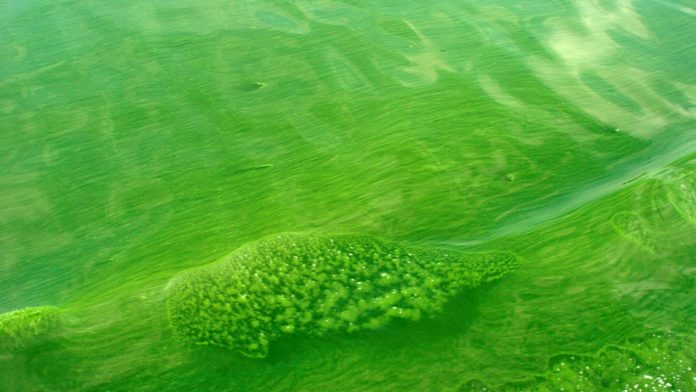Lake Erie is dead… or so it was claimed back in the 1960s, following successive pollution crises.
In the decades after, the lake’s health was largely rehabilitated, but recent years have witnessed a return to the smelly slime once more.
Large swathes of the water body are discoloured by a thick layer of blue/green mush during summertime, especially in the western part. These revolting stews are the products of harmful algal blooms (HABs), the proliferation of which is fueled by human activity and waste.
HABs contaminate our drinking water, are dangerous to swim in, and have profound environmental and economic consequences. The government estimates that the Lake Erie basin economy loses $272 million annually due to pollution.
A 2017 collaborative assessment of the Great Lakes by the EPA in the US and the Canadian government ranked Lake Erie’s pollution levels as the worst of the lot.
Phosphorus overload
Why have things taken a turn for the worse? Over the last half-century, the rapid expansion of cities, farmland, and populations around Lake Erie have piled on the pressure of pollution in the form of phosphorus.
Phosphorus is a key nutrient in water bodies, but excess amounts provide an abundance of fuel for algal blooms (climate change is exacerbating this further). Run-off from fertilizers on farmland and waste from municipal sewage treatment plants are among the primary contributors to the excessive phosphorus in our waters.
But not all algae are harmful. In fact, they’re the basis of most aquatic food chains, providing oxygen and food for countless forms of water-bound life. Hundreds of algae species exist, but it’s only certain rogue types such as microcystis that create HABs.
These types release toxins into the water as they bloom, and when potent enough, lead to government warnings regarding the safety of tap water such as in Toledo a few years back. HABs also cause eutrophication which depletes oxygen levels in the water and threatens marine life.
Binational commitment to save dying Lake Erie
Neighbouring American states Michigan and Ohio partnered with Ontario in 2015 in a joint effort to reduce phosphorus levels in Lake Erie by 40% over the next decade. A 2017 report card from environmental and conservation groups says efforts are lagging and the target won’t be met at the current rate of progress.
This past February, the federal and provincial governments announced a renewed effort to tackle the issue, accompanied by a publicly available action plan.
A 40% reduction remains the goal, but a definitive date has not been set. The action plan mentions that the governments will take a “precautionary approach” in reducing phosphorus levels “until such time that the science evolves to inform the establishment of a reduction target.” It is noted that a reassessment of a potential target date will be organized in 2020.
In the meantime, actionable steps have been outlined to get the ball rolling. Municipal wastewater treatment and collections systems need updating and agricultural operations can implement better land management techniques to minimize their impact.
If you have summer water activities planned in Lake Erie, be prepared to take your trip elsewhere. At least for now. Lake Erie might have been pronounced dead before, but there’s reason to be optimistic about a second revival given the scale of intervention and advancements in science and tech.









































